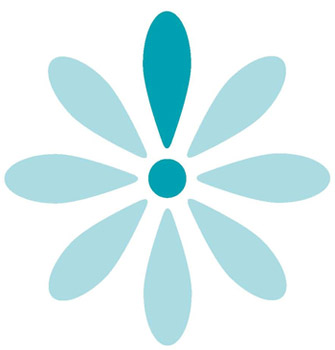Kathy Nielsen Ovarian Cancer Australia National Action Plan Interview

Kathy Nielsen Ovarian Cancer Australia National Action Plan Interview
To mark the annual Teal Ribbon Day Ovarian Cancer Australia has announced the development of the first ever National Action Plan for ovarian cancer research to improve quality of life and survival for women with ovarian cancer.
This ground-breaking plan will include the priorities for, and aims to accelerate the transition of research from the lab to the clinic.
CEO at Ovarian Cancer Australia Alison Amos said that treatment options for ovarian cancer have progressed little since the 1970s. This is reflected in the poor survival rate and often a poor quality of life.
'Ovarian cancer has a higher recurrence than other cancers because it commonly becomes resistant to current chemotherapy drugs," she said.
'We need to up the ante on research and development in ovarian cancer treatment and we need to ensure that scientists' discoveries progress quickly to clinical trials so that new treatments can be developed and women with ovarian cancer can expect better outcomes.
'Understanding what makes ovarian cancer recur is key to developing more effective treatments and we also need to develop less invasive surgical treatments for women with early stage ovarian cancer."
The National Action Plan for ovarian cancer research will be informed by an extensive audit of the current research landscape and by consultations with key researchers, clinicians, industry leaders and women with ovarian cancer.
Similar initiatives have proven effective with other types of cancer such as breast and prostate: breast cancer now has an average five year survival rate of 89% compared to 43% for ovarian cancer.
The Plan is essential to reducing the impact of ovarian cancer and it is a priority strategy for Ovarian Cancer Australia to achieve its vision to save lives and ensure that no woman with ovarian cancer walks alone.
On Teal Ribbon Day, Ovarian Cancer Australia invites all Australians to show their support for women with ovarian cancer by wearing a teal ribbon and by remembering those who have died from the disease.
Teal Ribbons can be purchased for $2 each from Chemmart Pharmacy, My Size and Plush stores nationwide; Brazilian Butterfly salons in ACT, Queensland, Victoria and WA; Noel Jones in VIC and from www.ovariancancer.net.au
Colour for a Cause teal nail polish packs are also available at Chemmart Pharmacies nationally, with proceeds going to Ovarian Cancer Australia.
For more information visit www.ovariancancer.net.au
Twitter: @ovariancancerOz #TealRibbonDay Facebook: https://www.facebook.com/OvarianCancerAustralia
 Interview with Kathy Nielsen: Manager, Research, Policy and Advocacy at Ovarian Cancer Australia
Interview with Kathy Nielsen: Manager, Research, Policy and Advocacy at Ovarian Cancer Australia
Question: Can you please explain to us what the National Action Plan for ovarian cancer research is?
Kathy Nielsen: In 2014 Ovarian Cancer Australia will deliver the first ever National Action Plan for ovarian cancer research, which is a roadmap for future investment in research and development where the destination is better survival and quality of life for women. We need to up the ante on research and development in ovarian cancer treatment and we need to ensure that scientists' discoveries progress quickly to clinical trials so that new treatments can be developed and women with ovarian cancer can expect better outcomes.
Question: What is outlined in the National Action Plan?
Kathy Nielsen: The National Action Plan will identify priorities for ovarian cancer research in Australia, so that research investment can be prioritised to those areas that are likely to have the greatest impact. Ovarian Cancer Australia is currently undertaking an audit of ovarian cancer research across Australia, to determine its impact, stage of development and to identify our strengths as well as any gaps. We are also conducting an extensive consultation process with researchers, clinicians and industry experts as well as with women with ovarian cancer. These processes will inform the research priorities for ovarian cancer.
Question: What is the main goal for the National Action Plan?
Kathy Nielsen: The plan aims to provide a competitive funding initiative to provide Australia's top researchers with a mechanism to fund ovarian cancer research through the development phases and into the clinic. It will facilitate collaboration with other research funders to increase overall investment in ovarian cancer, provide greater access for women to innovative treatments through clinical trials and ensure best practice clinical management including increased consumer engagement. Ultimately we want to help save the lives of Australian women who are diagnosed with ovarian cancer and create a better future for the thousands of Australian women who are living with this devastating disease.
Question: How have similar National Action Plans worked to improve the survival rate of other cancers?
Kathy Nielsen: Similar action plans for breast and prostate cancer have resulted in increased priority-driven investment and reported and measurable outcomes and much better survival rates. The development of a national cancer plan is a key outcome arising from the 2009 LIVESTRONG Global Cancer Summit aimed at advancing the global effort to reduce the impact of cancer.
Question: How will this National Action Plan improve quality of life and survival for women with ovarian cancer?
Kathy Nielsen: The plan will aim to develop new and improved ovarian cancer treatments based on new scientific knowledge that ovarian cancer is a collection of diseases, rather than a single disease. Improved treatments will be targeted to the particular ovarian cancer subtype, rather than the current 'one-size-fits-all approach". Focussing investment into targeted treatments and methods of diagnoses is important to help accelerate scientists' discoveries into clinical practice.
Question: What is the current survival rate for ovarian cancer?
Kathy Nielsen: Ovarian cancer has the lowest survival rate of any women's cancer. The majority of women diagnosed with ovarian cancer will have a poor prognosis: only 43% of women with ovarian cancer will survive for five years after their diagnosis – this compares to 89% for breast cancer. The average 5 year survival rate over all cancers is 66%, so ovarian cancer is well below these levels.
Question: How would you realistically like to see this improve over the coming years?
Kathy Nielsen: An ideal benchmark for improvement would be to reach and surpass the average of 66% within the next decade, and with a continuing positive climb. We would like to see improved treatment options for women that are targeted to the type of ovarian cancer that they are suffering, resulting in improved efficacy, with fewer side-effects and that can reduce the rate of recurrence. While it's difficult to predict actual numbers at this stage, we believe that such treatments could provide a significant improvement in overall survival, which is the main goal of ovarian cancer clinical trials.
Question: What do you hope to see from improved ovarian cancer research in Australia?
Kathy Nielsen: We ultimately want to improve the survival rate and improve the quality of life for women with ovarian cancer.
Question: How can Australians support this National Action Plan?
Kathy Nielsen: Australians can make a donation to Ovarian Cancer Australia to help us deliver our National Action Plan. Visit www.ovariancancer.net.au or call 1300 660 334.
Interview by Brooke Hunter
MORE
- Chiropractic Myths & Truths
- Gerard Fogarty Arthritis and Knee Replacement...
- Kym Ellery The ELLERY Eyewear Collection Interview
- Dr Ross Walker The Real Modern Killers Interview
- Shelly Horton Hay Fever Help Interview
- Sebastian VanVeenendaal Royal Rehab's Beach...
- Abigail Koch Family Private Health Insurance...
- Monique Cashion Organic Awareness Month Interview
- Dr Bill Harris Omega-3s Interview
- The Top Ten Health Myths Busted
- Professor Bolin IBD Management a Life-Long...
- Anthia Koullouros Best Cold and Flu Defence...
- Leprosy in NSW
- Julie-Anne Mitchell Go Red for Women Healthy...
- Insight into Chronic Disease Hospitalisations...
- Jeff Chan Mobile Phone Allergies Interview
- How to Conquer Bad Winter Health Habits
- Bad Cholesterol Behind Cancer Spreading In Body
- New Screening Test Recommended To Help Prevent...
- Support For The Rural Nurse Workforce A...
- Kathy Nielsen Ovarian Cancer Australia National...



